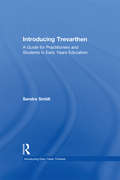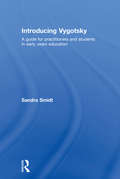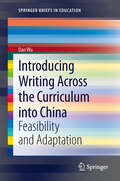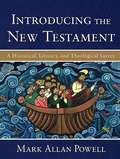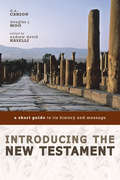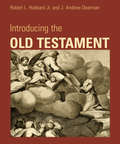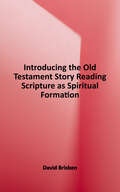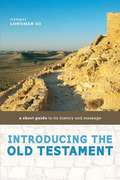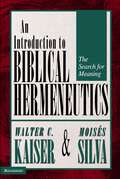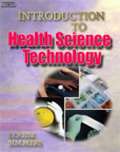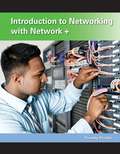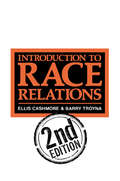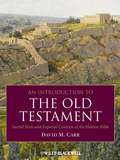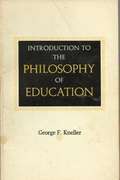- Table View
- List View
Introducing Research in Early Childhood
by Polly Bolshaw Jo Josephidou“What a useful book for the beginner researcher! Offering a grounding in the different kinds of research conducted in the field of early childhood, this book’s inviting and accessible style will support the novice researcher, and the development of criticality in relation to research.” Deborah Albon, Senior Lecturer in Early Childhood Studies, University of Roehampton What does the term ‘research’ in early childhood actually mean? What does research involve, and how do you go about doing it? This book explains exactly what ‘research’ is; it explores key ideas, themes and terminology to provide you with a clear understanding of its importance to your early years or early childhood studies degree. It will help you: · Understand what it means to think critically, and unpick childhood research · Learn how to analyse, examine and understand the importance of others’ research · Get to know how research is designed and carried out · Appreciate the importance of ethics · Get to grips with translating research into real life in an early childhood setting. Laying the foundations to develop your confidence in talking about research and making links between theory and practice, this book will support you as you begin your research journey into the world of early years. Polly Bolshaw is a Senior Lecturer in Early Childhood Studies at Canterbury Christ Church University. Jo Josephidou is a Senior Lecturer in Early Childhood Studies at Canterbury Christ Church University.
Introducing Special Educational Needs: A Guide for Students
by Philip Gardner John Dwyfor DaviesPressure of time means that the complex topic of special educational needs (SEN) at initial teacher training and post-graduate levels can often be covered at too swift a pace. The unfortunate result is that a newly qualified teacher faced with the pressures of today's typically inclusive classrooms can feel unprepared or lacking in knowledge about this vitally important area.This supportive, accessible text will be invaluable to students undergoing their initial teacher training as it features broad coverage of key aspects of SEN in a single volume. It will provide the reader with succinct information on major SEN themes, key questions for student teachers on each topic, and a selection of the most important readings. It also includes sets of reflection-based student tasks; activities for completion during school placements; practical tutor-led to mentor-led activities, plus extension activities; and a series of suggested topics for school-based assignments in SEN.
Introducing Teachers’ Writing Groups: Exploring the theory and practice (National Association for the Teaching of English (NATE))
by Jenifer Smith Simon WrigleyTeachers’ writing groups have a significantly positive impact on pupils and their writing. This timely text explains the importance of teachers’ writing groups and how they have evolved. It outlines clearly and accessibly how teachers can set up their own highly effective writing groups. In this practical and informative book, the authors: share the thinking and practice that is embodied by teachers’ writing groups provide practical support for teachers running a group or wishing to write for themselves in order to inform their practice cover major themes such as: the relationship between writing teachers and the teaching of writing; writing as process and pleasure; writing and reflective practice; writing journals and the writing workshop. The authors provide a rationale for the development of writing groups for teachers and for ways of approaching writing that support adult and child writers and this rationale informs the ideas for writing throughout the book. All writing and teaching suggestions have been extensively tried and tested by class teachers, and will be of enormous interest to any teacher or student teacher wishing to run their own successful writing group.
Introducing The New Testament: A Historical, Literary, And Theological Survey
by Mark PowellThis lively, engaging introduction to the New Testament is critical yet faith-friendly, lavishly illustrated, and accompanied by a variety of pedagogical aids, including sidebars, maps, tables, charts, diagrams, and suggestions for further reading. The full-color interior features art from around the world that illustrates the New Testament's impact on history and culture. The first edition has been well received (over 60,000 copies sold). This new edition has been thoroughly revised in response to professor feedback and features an updated interior design. It offers expanded coverage of the New Testament world in a new chapter on Jewish backgrounds, features dozens of new works of fine art from around the world, and provides extensive new online material for students and professors available through Baker Academic's Textbook eSources.
Introducing The Old Testament
by Robert L. Hubbard J. Andrew DearmanThis book has been a long time in coming-too long, perhaps. But as the awesome and long-suffering novelist, Snoopy, once glumly observed, "Good writing is hard work!" Amen to that, Snoopy! But to emerge, a book needs more than just toiling authors who string thoughts into words; it also requires the wisdom, support, and encouragement of other people for it to see the light of day.
Introducing Trevarthen: A Guide for Practitioners and Students in Early Years Education (Introducing Early Years Thinkers)
by Sandra SmidtColwyn Trevarthen’s seminal work has earned him a place alongside the most prestigious thinkers, writers and researchers into human development. He is universally acknowledged as the pre-eminent expert on foetal, neonatal and early childhood development. Sandra Smidt examines the impact of his scientific training, linked to his interest in how filmed episodes of mother or father/baby interactions might inform his understanding about early sociocultural development, encouraging us to view the human infant with fresh eyes and realise how purposive human behaviour is from the start. His interest in and collaborations with others introduce the reader to the idea of communicative musicality which, together with physical movement, lead the child to acquiring language. This book focuses on the earliest years of life and makes complex ideas accessible and applicable to a range of settings. As well as providing a glossary of key terms and an introduction to the life and work of Trevarthen, the book is split into three parts: From foetus to neonate, The remainder of the first year of life and From one to three. Each part offers case studies, practical examples, draws on recent research evidence and includes helpful pointers for students, labelled ‘Think about this’. This essential guide to his work will be of interest to professionals working with children in early childhood settings and to undergraduate students training to become early childhood professionals.
Introducing Vygotsky: A Guide for Practitioners and Students in Early Years Education (Introducing Early Years Thinkers)
by Sandra SmidtSandra Smidt takes the reader on a journey through the key concepts of Lev Vygotsky, one of the twentieth century’s most influential theorists in the field of early education. His ground-breaking principles of early learning and teaching are unpicked here using every-day language, and critical links between his fascinating ideas are revealed. Introducing Vygotsky is an invaluable companion for anyone involved with children in the early years. The introduction of Vygotsky’s key concepts is followed by discussion of the implications of these for teaching and learning. Each chapter also includes a useful glossary of terms. This accessible text is illustrated throughout with examples drawn from real-life early years settings and the concepts discussed include: mediation and memory culture and cultural tools mental functions language, concepts and thinking activity theory play and meaning. Essential reading for all those interested in or working with children, Introducing Vygotsky emphasises the social nature of learning and examines the importance of issues such as culture, history, language, and symbols in learning.
Introducing World Religions
by Victoria Kennick UrubshurowIntroducing World Religions offers an exciting new approach to the study of world religions. It explores the main religions of both East and West, situating them in a cross-cultural context and using a powerful dramatic metaphor to bring them alive for students. Ideal for one-semester or modular introductory survey courses, Introducing World Religions will be essential reading for any student of religions, worldwide.
Introducing Writing Across the Curriculum into China
by Dan WuDr. Wu Dan's Introducing Writing Across the Curriculum into China is an important and provocative research study that is broadly international in scope. Of particular significance for education in China, this book provides a historical analysis of writing instruction in China and an original application of activity theory used to analyze problems and possibilities for Writing Across the Curriculum (WAC) in higher education. Through an examination of important aspects of WAC as it has developed in the United States, Dr. Wu Dan brings together various perspectives in support of developing and sustaining WAC programs in China and by analogy throughout the world. Her work opens new avenues for research in writing and for the teaching of courses throughout the curriculum using a writing-in-the-disciplines approach. A major contribution to international WAC scholarship, Introducing Writing Across the Curriculum into China will be invaluable to English faculty and to all readers interested in educational innovations in China.
Introducing a School Dog: Our Adventures with Doodles the Schnoodle
by Cherryl DrabbleAnimal Assisted Therapy is becoming increasingly popular in education settings, but there is very little information on how to implement it. This practical guide provides everything you need to know to introduce a therapy dog, and the various benefits that a dog can have for pupils, from young children to teenagers.
Introducing the Bible
by William Barclay"If you want to keep alive, keep learning. . . . To think is a necessity of the Christian life."
Introducing the New Testament: A Historical, Literary, and Theological Survey
by Mark Allan PowellThis book offers an up-to-date New Testament introduction for undergraduate students and general readers. Powell presents disputed and controversial issues fairly, neither dictating conclusions nor privileging skepticism over faith-based perspectives. Includes helpful sidebars, maps, tables, charts, glossary, diagrams, and suggestions for further reading and beautiful artwork illustrating the reception of the New Testament through various times and cultures.
Introducing the New Testament: A Short Guide to Its History and Message
by D. A. Carson Douglas J. Moo Andrew David NaselliAbridgement of An Introduction to the Old Testament. This abridged edition of an established major textbook brings the best of New Testament scholarship to the church and makes it accessible to the average reader. This book focuses on historical questions dealing with authorship, date, sources, purpose, and destination of the New Testament books. By focusing on the essentials, the authors ensure that each book is accurately understood within its historical settings. For each New Testament document, the authors also provide a summary of that book’s content and discuss the book’s theological contribution to the overall canon. This abridgement includes questions at the end of each chapter to facilitate group discussion and personal review. It will help a new generation of students and church leaders better grasp the message of the New Testament
Introducing the New Testament: Exploring the Bible The Dickinson Series, Second Edition
by Rev Anne RobertsonAnd she wrapped him in swaddling clothes and laid him in a manger. Jesus is the central figure of the New Testament and this third volume in the popular Exploring the Bible series examines Jesus in three distinct ways: A man like other men, a Jewish rabbi, and the Christ of Christian faith. Then it's on to the cantankerous Paul, the other New Testament authors, and the wild and baffling book called Revelation. Learn what Nazareth was like in the first century, discover what scholars know and don't know about Jesus as a historical figure, and explore how Paul wrote all those letters. And who is the Antichrist anyway? A Leader's Guide with detailed lesson plans for six group sessions is sold separately. Other volumes in the series include: Volume 1: What Is the Bible? Volume 2: Introducing the Old Testament
Introducing the Old Testament
by Robert L. Hubbard Jr. J. Andrew DearmanThe newest and best Old Testament intro for university and seminary studentsIn this up-to-date, student-friendly text, Robert Hubbard and J. Andrew Dearman bring decades of scholarly study and classroom experience to bear as they introduce readers to the context, composition, and message of the Old Testament.Each chapter orients readers to the Old Testament book or books under consideration, outlining historical and cultural background, literary features, main characters, and structure. Throughout these discussions—of the Torah, the historical books, the prophets, and the poetry—Hubbard and Dearman also identify and trace key theological themes.Replete with maps, illustrations, sidebars, discussion questions, and suggestions for further reading, Introducing the Old Testament will equip students to read, wrestle with, and personally engage these ancient sacred texts.
Introducing the Old Testament - Student Text - Second Edition: Exploring the Bible: The Dickinson Series
by Anne RobertsonBefore Stonehenge or the wheel, back before the pyramids, math, or even the crudest writing existed, ancient peoples gathered and told stories. They told stories of how the world began, what the first people were like, and which of them were heroes or failures. They tried to make sense of the world around them and tried to sort out who the gods were and what those gods wanted from them. More than ten thousand years later, one set of those stories has come down to us in the form of the Old Testament. It is the story of the Jewish people and their distinctive God, giving us a glimpse through story, song, history, and law of the rocky, raucous, faithful, fumbling beginnings of one of the oldest religions on earth. Perhaps you think you know it. Think again. This second course in Exploring the Bible: The Dickinson Series will help you better understand the Old Testament in the context of the world in which it was written. Use it as designed in small-group study or work with it on your own. Either way, you will come to a new appreciation for this amazing collection of ancient texts and the faith that they represent. A detailed Leader's Guide for this study is sold separately. Other volumes in the series include: Volume 1: What Is the Bible? Volume 3: Introducing the New Testament
Introducing the Old Testament Story: Reading Scripture as Spiritual Formation, 1st Edition
by David BrisbenThis book familiarizes students with the Ancient Near Eastern writings that compose the Old Testament. Through the application of literary, historical, and cultural analysis, this textbook helps the modern reader understand the story of the ancient Hebrews and their relationship to God and experience it as the ancient Hebrews did, encouraging a deeply personal and divine connection with the material. The text begins by providing background information regarding the Old Testament. The first two chapters provide context as to what the Old Testament is, where and when its story occurred, a general idea of what the story is about, how the story progressed over time, how to approach scholarly study of the writings, and the authenticity of the works. Each succeeding chapter addresses specific writings within the Old Testament, bringing to light the literary devices at play, the cultural context and significance of each piece, and how ancient Hebrews would have consumed and reacted to each selection. Written to inspire engagement with Old Testament writings on both an academic and spiritual level, Introducing the Old Testament Story is ideal for introductory or survey courses on the Old Testament, as well as courses on religion, especially those focusing on the place of the Bible in spiritual formation. David Brisben, Ph.D., is a professor of Christian ministries at John Brown University. He earned his master's in divinity degree from Erskine Seminary and his doctorate degree from Trinity Evangelical Divinity School. His passion for storytelling, and more specifically the stories found in the Old and New Testaments, drives his vocational calling to teach students what it means to enter and live in God's story.
Introducing the Old Testament: A Short Guide to Its History and Message
by Tremper Longman IIIAn abridged edition of the bestselling book An Introduction to the Old Testament, this rich guide makes Old Testament scholarship accessible to the average reader. Renowned Bible scholar Tremper Longman III gathers the best in historical research and literary analysis to lead the reader through each book of the Old Testament. Most significantly, Longman explores the meaning of each book in light of its cultural setting. Abbreviated chapters highlight key research discoveries, ensuring that the information is both significant and manageable. Including questions at the end of each chapter for group discussion or personal reflection, Introducing the Old Testament makes the words, history, and culture of biblical times come alive for readers. Laypersons as well as church leaders will take away a solid understanding of the historical background and theological message of the Old Testament and be inspired to apply biblical truths to their lives.
Introduction To Biblical Hermeneutics: The Search for Meaning
by Walter KaiserThis standard hermeneutics text has been updated and expanded, allowing the authors to fine-tune their discussions on fundamental interpretive topics. Four new chapters have been added that address more recent controversial issues. The coauthors hold different viewpoints on many topics addressed, making for vibrant, thought-provoking dialogue on this crucial discipline.
Introduction To Health Science Technology
by Louise SimmersIntroduction to Health Science Technology covers the core information needed to pursue a career in health care from an introduction of the health care industry and the basics of a health care system to overview of health care careers and legal and ethical responsibilities of health care workers to medical terminology and basic anatomy and physiology.
Introduction To Networking With Network+
by Microsoft Official Academic Course Staff Timothy PintelloIntroduction to Networking with Network + is the cornerstone for your networking curriculum. It is built around the new Network+ 2012 framework. It is based upon the CompTIA Network+ certification and covers the most recent exam objectives. Are you tired of books that cover new technologies and exam topics in a fleeting fashion, and are bogged down with legacy technology coverage that is now out-dated? This book by Timothy Pintello is up-to-date and covers only relevant and current technologies. This book also includes his revolutionary method for making Subnetting easily understood by new IT
Introduction To Race Relations
by Barry TroynaThis is the second edition of the textbook on race and ethnic relations, which has been adopted by academic and vocational courses and which is designed to be a straightforward introduction to this field of study. It retains all the original features, but reflects on events over the years since its original publication, incorporating accounts of developments in the UK and USA. Suggestions for further readings are revised in the light of the latest research.
Introduction To Statistics: An Intuitive Guide For Analyzing Data And Unlocking Discoveries
by Jim FrostBuild a solid foundation in data analysis. Be confident that you understand what your data are telling you and that you can explain the results to others! I'll help you intuitively understand statistics by using simple language and deemphasizing formulas. This guide starts with an overview of statistics and why it is so important. We proceed to essential statistical skills and knowledge about different types of data, relationships, and distributions. Then we move to using inferential statistics to expand human knowledge, how it fits into the scientific method, and how to design and critique experiments.
Introduction To The Old Testament: Sacred Texts And Imperial Contexts Of The Hebrew Bible
by David M. CarrThis comprehensive, introductory textbook is unique in exploring the emergence of the Hebrew Bible in the broader context of world history. It particularly focuses on the influence of pre-Roman empires, empowering students with a richer understanding of Old Testament historiography. <P><P>Provides a historical context for students learning about the development and changing interpretations of biblical texts <P><P>Examines how these early stories were variously shaped by interaction with the Mesopotamian and Egyptian, Assyrian, Babylonian, Persian, and Hellenistic empires <P><P>Incorporates recent research on the formation of the Pentateuch <P><P>Reveals how key biblical texts came to be interpreted by Jewish, Christian, and Muslim faiths Includes numerous student-friendly features, such as study questions, review sections, bibliographies, timelines, and illustrations and photos
Introduction To The Philosophy Of Education
by E. KnellerThe purpose of this book is to outline those elements of philosophy that are relevant to a proper understanding of education and the task of teaching. Much of the content comes from a text that I edited, entitled Foundations of Education (Wiley, 1963). I have rewritten and in places enlarged the original, especially the sections on existentialism and logical analysis, which I have assigned to a separate chapter.





